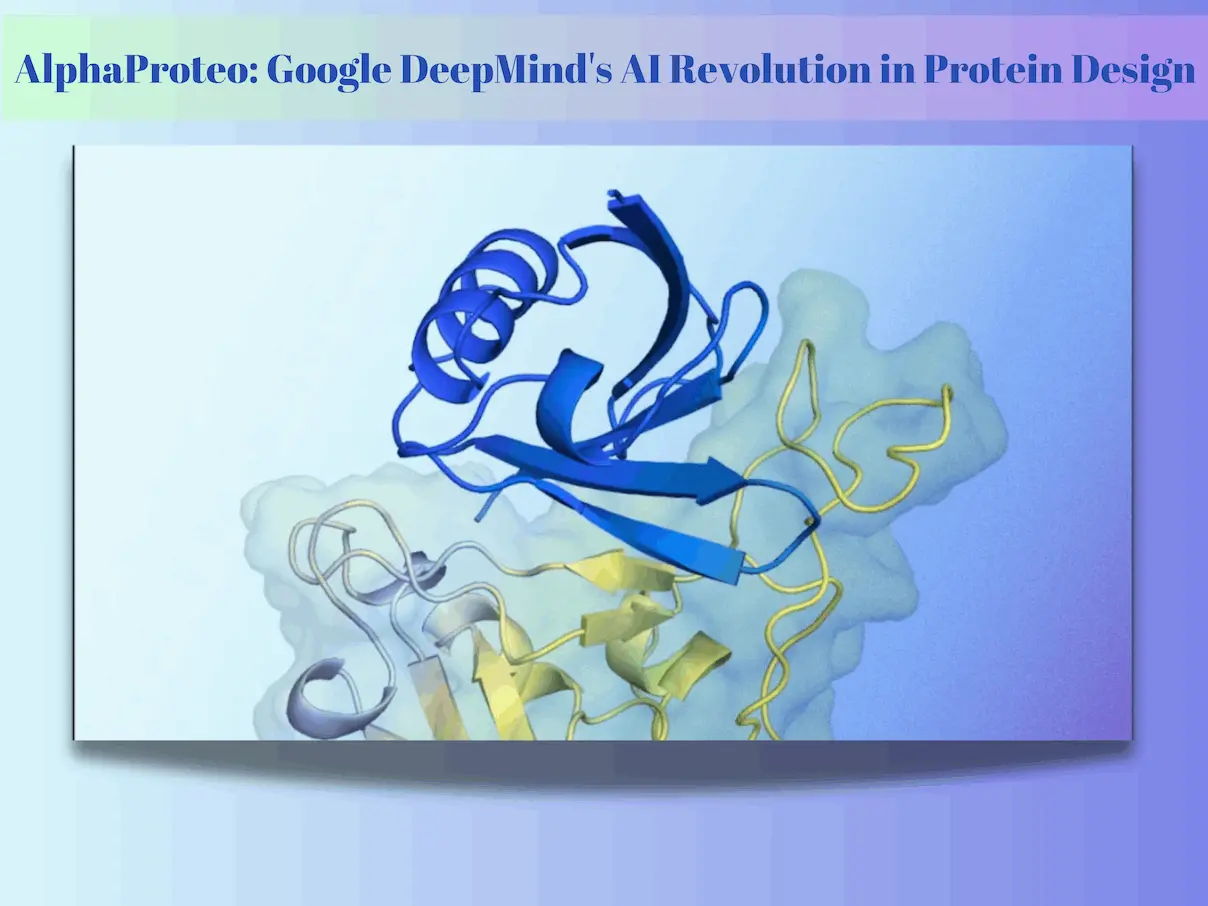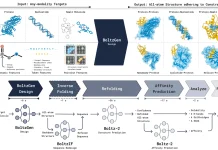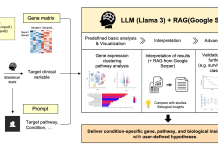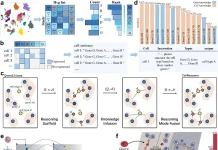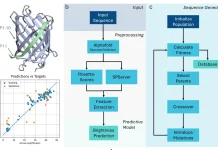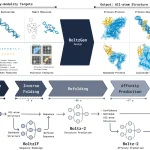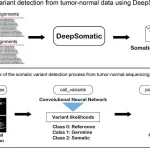Protein-binding protein computational design is a key skill with many applications in biotechnology and biological research. While some target proteins have been successfully targeted by recent approaches, the problem of creating high-affinity binders on demand without requiring repeated rounds of experimental testing has not yet been fully overcome. The first AI system for creating unique, powerful protein binders that may be used as building blocks for biological and medical research is called AlphaProteo, introduced by the researchers of Google DeepMind and collaborators. In addition to helping with the development of biosensors and new drug discovery, this technology offers the potential to improve the understanding of biological processes. AlphaProteo is a screening method that shows promise for a variety of research applications by suggesting that with just one round of medium-throughput screening, researchers can gain improved binding affinities and greater experimental success rates on seven target proteins.
Highlights of the Work
- Researchers evaluate binders created against eight structurally different target proteins in experiments and present the AlphaProteo protein design method.
- Experimental verification of successful binders was achieved for seven targets, with a range of 9% to 88% for designs tested in the wet lab. These values surpass the most advanced approach now in use and exceed other approaches by a factor of five to a hundred. The first computationally developed binders for one of these targets are reported.
- The PDB screen demonstrated in silico performance on hundreds of target proteins, indicating a broad range of possible generalizations. The method’s shortcomings were highlighted when the eighth target, which was difficult, was unable to acquire binders.
- Picomolar affinities have shown promise by enabling the screening and optimization of binders with low-nanomolar affinities to targets (80-960 picomolar affinities), which have resulted in much better binding affinities than earlier designs.
- By establishing the suppression of VEGF signaling in human cells and the neutralization of SARS-CoV-2 in Vero monkey cells, researchers test binders for two of the objectives for biological function.
- The intended binder and binder-target complex structures are validated by X-ray crystallography and cryo-EM.
Introduction
Proteins are essential for cell proliferation and other biological processes because they interact to control cellular activities. Although techniques for predicting protein structures, such as AlphaFold, are useful for understanding protein interactions, they are not able to directly change these interactions by creating new proteins. Researchers can design new proteins that bind to target molecules with success, which will advance the fields of medication development, tissue and cell imaging, disease research, and crop resistance. Even with the advancements of contemporary machine learning techniques, the procedure is still time-consuming and necessitates a great deal of experimental testing.
Advances in the field of Deep Learning Models
In recent years, significant advancements in protein design and biomolecular structure prediction have been made possible by deep learning-based algorithms. This has made it possible to make progress on important scientific and socioeconomic issues, such as the design and prediction of protein-protein interactions. With computational design, binders to certain targets can now be obtained without the need for high-throughput screening. In certain situations, such as for short peptides or disordered targets, high binding affinity has also been attained without the need for experimental optimization. However, the affinity of the original designs is typically low, success rates against convex or polar epitopes remain low, and many targets remain unachievable.
Understanding AlphaProteo
AlphaProteo consists of two parts: a distillation set of AlphaFold predictions and a generative model trained on structure and sequence data from the Protein Data Bank (PDB). It also includes a filter that rates created designs to determine whether or not they will be successful in experiments. The generative model produces the structure and sequence of a potential binder for a target after researchers input the structure of the “target” protein and, if desired, identify “hotspot” residues that correspond to the target epitope. Before conducting any experimental testing, researchers first produce a huge number of design candidates and then reduce them to a smaller set. Based on in silico benchmarks, the generative model performs favorably in comparison to the best current approach.
Applications of AlphaProteo
- AlphaProteo can produce novel protein binders for a variety of target proteins, such as VEGF-A, which is linked to diabetes problems and cancer. This is the first instance of an effective VEGF-A protein binder designed by AI technology.
- Researchers investigated seven target proteins, and on each, AlphaProteo outperforms the best available approaches in terms of binding affinities and experimental success rates, ranging from three to 300 times better.
AlphaProteo in Real-World Protein Binding
Research teams at the Francis Crick Institute evaluated a protein binder called AlphaProteo and validated it in silico in a wet lab. The binders, which included VEGF-A and SC2RBD, were discovered to have beneficial biological roles and binding interactions that matched AlphaProteo’s predictions. Based on its results, AlphaProteo may be able to minimize the number of initial protein binder application experiments. Nevertheless, it was not able to create effective binders against TNF̑, a protein linked to autoimmune illnesses such as rheumatoid arthritis. Since gaining strong binding is simply the first step in creating proteins for practical applications, the team wants to enhance AlphaProteo’s ability to address tough targets.
Advancing Protein Science with Caution
Rapidly developing technology called protein design holds great promise for advancing science across a range of domains, such as the identification of disease drivers, the creation of diagnostic tests for viral epidemics, the support of environmentally friendly manufacturing practices, and the removal of pollutants from the environment. Isomorphic Labs is collaborating with outside experts to help shape their phased-release strategy for this work and to support local initiatives to create best practices. The impacting biology difficulties and constraints of AlphaProteo, a program for drug design developed at Isomorphic Labs, are being investigated. To provide a responsible protein design service, the company is also increasing the success rate and affinity of AlphaProteo’s algorithms, broadening the scope of its design capabilities, and collaborating with structural biology, biochemistry, and machine learning researchers.
Conclusion
AlphaProteo, a novel AI system for drug discovery, has demonstrated the ability to generate sub-nanomolar binders for a wide range of targets after a single round of medium-throughput testing. With a molecular weight between 5 and 15 kDa, these highly expressed, thermostable, and tiny binders are already appropriate for some research uses. All binders are built with a target crystal structure as input, however, only a small number of targets have been validated by the research. The company’s goal is to enhance AlphaProteo’s functionality and tackle a broader spectrum of binder design concerns, which could lead to the discovery of novel solutions for biological applications such as protein, cell, and tissue imaging and cell signaling control.
Article Source: Reference Article | Reference Paper.
Follow Us!
Learn More:
Deotima is a consulting scientific content writing intern at CBIRT. Currently she's pursuing Master's in Bioinformatics at Maulana Abul Kalam Azad University of Technology. As an emerging scientific writer, she is eager to apply her expertise in making intricate scientific concepts comprehensible to individuals from diverse backgrounds. Deotima harbors a particular passion for Structural Bioinformatics and Molecular Dynamics.

